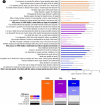Willingness toward post-mortem body donation to science at a Mexican university: an exploratory survey
- PMID: 38007515
- PMCID: PMC10675933
- DOI: 10.1186/s12910-023-00982-1
Willingness toward post-mortem body donation to science at a Mexican university: an exploratory survey
Abstract
Background: Voluntary post-mortem donation to science (PDS) is the most appropriate source for body dissection in medical education and training, and highly useful for biomedical research. In Mexico, unclaimed bodies are no longer a legal source, but PDS is legally possible, although scarcely facilitated, and mostly ignored by the general population. Therefore, we aimed to evaluate the attitude and willingness for PDS and to identify a sociodemographic profile of people with willingness toward PDS.
Methods: A validated on-line survey was distributed by the convenience method via the social networks of a Catholicism-inspired, private university in northern Mexico. Frequency analyses of all variables and coded free comments were complemented with association studies.
Results: Although the responder cohort (n = 143) was too small and biased to be representative of the university community (n = 13,500), willingness to post-mortem organ donation was 90.7% and to PDS 70.7%. In this cohort, PDS willingness had the strongest association with mature age (> 40 years old; P, 0.0008). Among young adults, willingness to PDS was the lowest among volunteers from technical and business schools and the highest among those from the social sciences (P, 0.009). Respondents from the social sciences were also the most consistent between attitude and behavior with respect to organ donation. A free comment option revealed respondents were interested in the unusual taboo topic.
Conclusions: A small, but sufficiently large proportion expressed willingness toward PDS. In our university cohort, which was biased in higher education and altruism, mature age and social interest were associated with PDS willingness.
Keywords: Bioethics; Biomedical research; Medical education; Post-mortem; Whole-body donation.
© 2023. The Author(s).
Conflict of interest statement
The authors declare no competing interests.
Figures


Similar articles
-
The relationship between body donation and attitudes toward death and altruism in Changsha City in China.Anat Sci Educ. 2023 Nov-Dec;16(6):1200-1208. doi: 10.1002/ase.2309. Epub 2023 Jun 16. Anat Sci Educ. 2023. PMID: 37328430
-
Knowledge, attitude and willingness to donate organ among medical students of Jimma University, Jimma Ethiopia: cross-sectional study.BMC Public Health. 2020 May 27;20(1):799. doi: 10.1186/s12889-020-08931-y. BMC Public Health. 2020. PMID: 32460739 Free PMC article.
-
Willingness toward organ and body donation among anatomy professors and students in Mexico.Anat Sci Educ. 2017 Nov;10(6):589-597. doi: 10.1002/ase.1705. Epub 2017 Jun 2. Anat Sci Educ. 2017. PMID: 28575538
-
Level of Organ Donation-Related Knowledge and Attitude and Willingness Toward Organ Donation Among a Group of University Students in Western China.Transplant Proc. 2018 Dec;50(10):2924-2931. doi: 10.1016/j.transproceed.2018.02.095. Transplant Proc. 2018. PMID: 30577149
-
Cultural acceptability and personal willingness of Iranian students toward cadaveric donation.Anat Sci Educ. 2017 Mar;10(2):120-126. doi: 10.1002/ase.1634. Epub 2016 Aug 12. Anat Sci Educ. 2017. PMID: 27517382
Cited by
-
The acceptances and associated influences of body donation in Mainland China: a national cross-sectional study.Sci Rep. 2025 Apr 22;15(1):13920. doi: 10.1038/s41598-025-98401-5. Sci Rep. 2025. PMID: 40263594 Free PMC article.
-
Barriers in Body Donations for Anatomy Teaching: Lessons Learned From Students and Donors.Cureus. 2024 Oct 16;16(10):e71635. doi: 10.7759/cureus.71635. eCollection 2024 Oct. Cureus. 2024. PMID: 39552986 Free PMC article.
References
-
- Wood A, Whiten S, McVee J, Issberner J, Jackson D, Herrington CS. Histopathology from the dissecting room: Are cadavers a suitable source of educationally useful histopathology specimens? J Anat. 2015;9:26–33. doi: 10.2399/ana.14.048. - DOI
-
- Zhang G, Fenderson B. Pathology encountered during cadaver dissection provides an opportunity for integrated learning and critical thinking. Austin J Anat. 2014;1:1027.
-
- Pinto BJ, Gómez AI, Marulanda J, León AH. Necroética: El cuerpo muerto y su dignidad póstuma. Repert Med Cirugía. 2018;27:55–64. doi: 10.31260/RepertMedCir.v27.n1.2018.136. - DOI
MeSH terms
LinkOut - more resources
Full Text Sources
Medical
Miscellaneous

